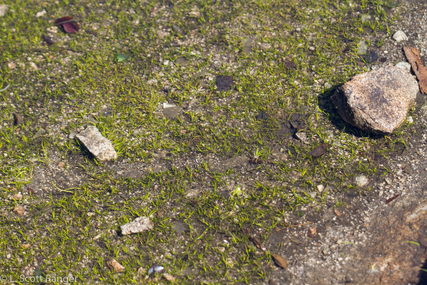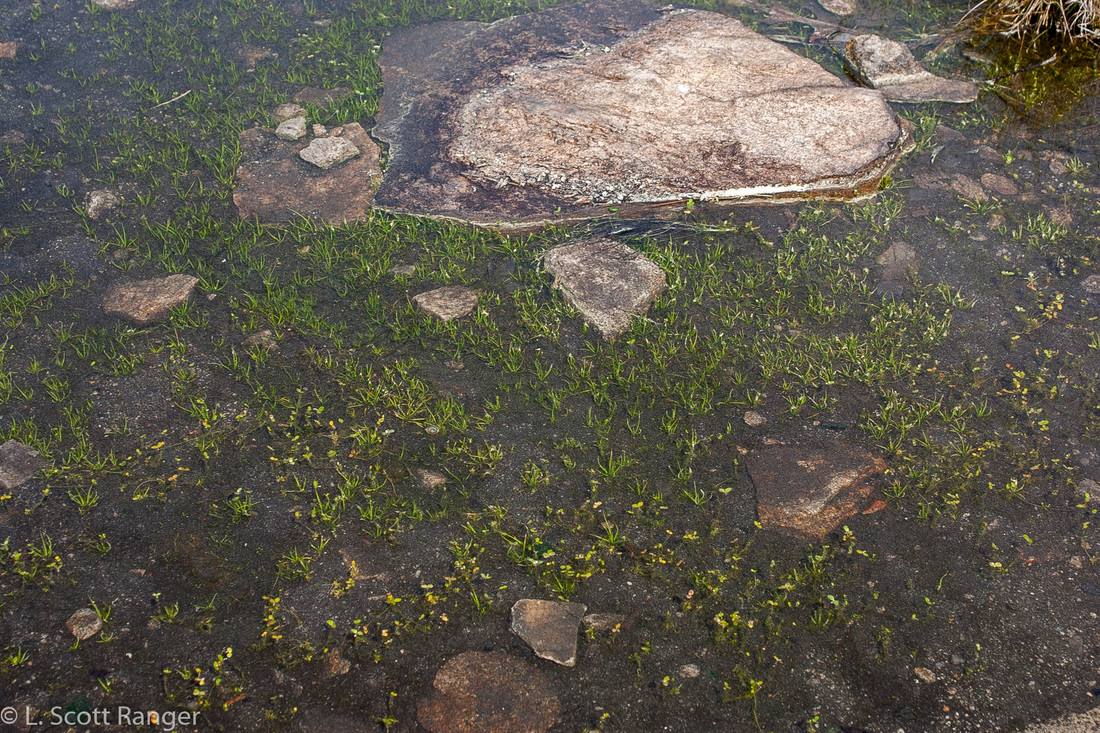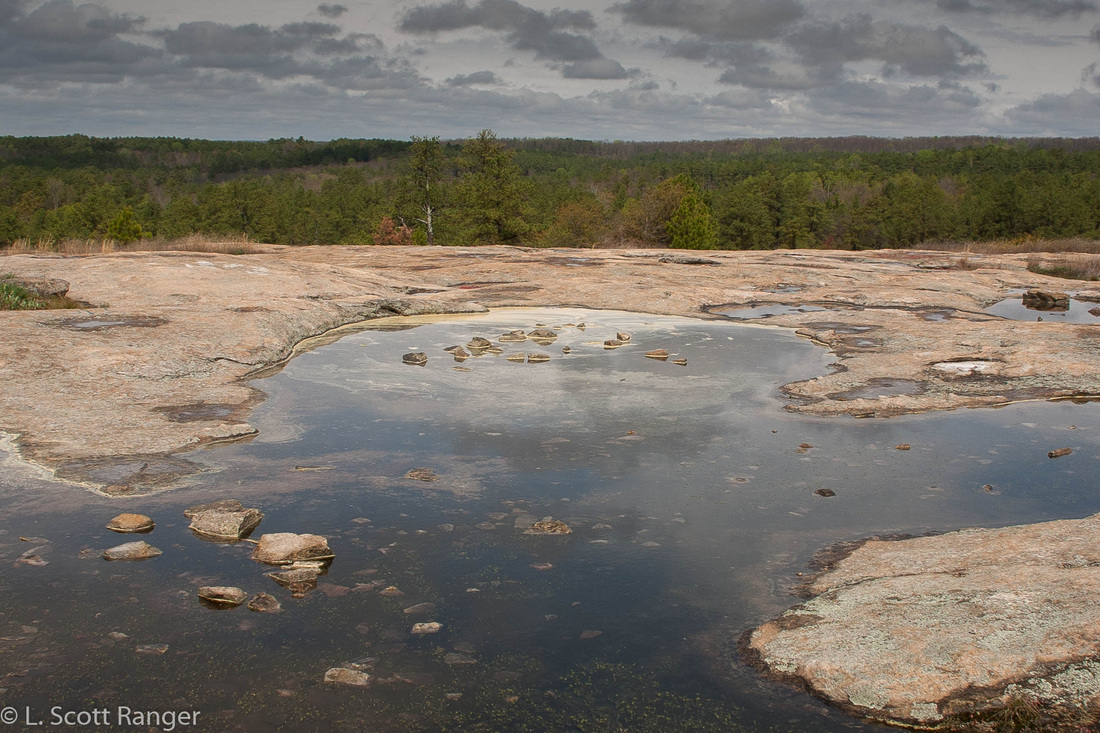Flora of Georgia and surrounding states
Granite Outcrop Plants
Isoëtes melanospora Engelmann 1877, black-spored quillwort

During wet periods, the vernal pools of some of our granite and gneiss outcrops seem to have an Astroturf under the water. It is very grass-green and even looks like a closely-cut grass golf green. Most folks just walk by and only take note of the green. Those "in the know" stop to admire one of our rare and amazing plants.
Taxonomy
Quillworts are a strange plant, one that for most people is a little hard to classify. I've heard people—including myself—call them ferns. Many call them "fern allies", but these are both very misleading terms. More closely related to the clubmosses, the clade that includes them has a long geologic history making them rather distantly related to ferns. What they share with ferns is reproduction with spores and they have a near world-wide distribution.
Synonym
Calamaria melanospora (Engelmann) Kuntze 1891
Etymology
The genus name comes from the Greek ίσος isos, equal + έτος etos, year, referring to evergreen habit of some species. The eipthet comes from the Greek μαύλος melos, black + σπορά spora, spore for "black-spored".
Quillwort derives from the shape of the leaves and the old English word usually used for herbaceous plants.
Status
Federally listed as endangered wherever found.
State of Georgia listed as endangered.
NatureServe status is G1 - Critically Imperiled.
Distribution & Habitat
The Biota of North America has a county-level distribution map.
The UNC Atlas has a county-level distribution map.
The UGA Atlas has a county-level distribution map.
Quillworts are mostly aquatic plants, or plants that require a significant amount of moisture for much of their life cycle.
Taxonomy
Quillworts are a strange plant, one that for most people is a little hard to classify. I've heard people—including myself—call them ferns. Many call them "fern allies", but these are both very misleading terms. More closely related to the clubmosses, the clade that includes them has a long geologic history making them rather distantly related to ferns. What they share with ferns is reproduction with spores and they have a near world-wide distribution.
Synonym
Calamaria melanospora (Engelmann) Kuntze 1891
Etymology
The genus name comes from the Greek ίσος isos, equal + έτος etos, year, referring to evergreen habit of some species. The eipthet comes from the Greek μαύλος melos, black + σπορά spora, spore for "black-spored".
Quillwort derives from the shape of the leaves and the old English word usually used for herbaceous plants.
Status
Federally listed as endangered wherever found.
State of Georgia listed as endangered.
NatureServe status is G1 - Critically Imperiled.
Distribution & Habitat
The Biota of North America has a county-level distribution map.
The UNC Atlas has a county-level distribution map.
The UGA Atlas has a county-level distribution map.
Quillworts are mostly aquatic plants, or plants that require a significant amount of moisture for much of their life cycle.
|
Black-spored quillwort is found in 14 Georgia counties with an disjunct population in Lancaster County, South Carolina. One of the largest populations of the plant is in the large solution pit atop the summit of Arabia Mountain in DeKalb County, Georgia where there surely are well over a thousand plants, but I've never counted them.
This population was imperiled for many years as Arabia Mountain was used as a recreation area for parties, 4-wheeling and general cavorting. When DeKalb County realized the value of their park after a series of pipe bombs were found (my memory is insufficient to remember when this was, but some 2 decades ago), the mountain was gradually restored to a near natural state. Today, access to the top is only by foot. The solution pits are all open and still suffer from walkers during the summer months when the seeds are very vulnerable. Since this quillwort is capable of loosing its leaves during periods of desiccation and regrowing them when water is plentiful, it is well-adapted to the granite outcrops of Georgia. |
|
Description
Quillworts have a whorl of narrow, grass-like leaves that widen near the base and wrap around a corm. These leaves can be evergreen, winter deciduous, or dry-season deciduous depending upon the habitat. Ours can be called dry-season deciduous as when the vernal solution pits dry up, the leaves fall off. When water fills the pools, new leaves grow. This makes this somewhat primitive plant well-adapted to the harsh environment the solution pits often subject their dwellers to tolerate. The swollen base where the leaves attach to the corm is where the male and female sporangia are born that produce megaspores that "act" as female and microspores that "act" as male. Spores are not seeds, as they are nowhere near as complex as seeds. They are diploid, having the full set of chromosomes from each parent, as opposed to haploid gametes. Spores are made of many cells and are capable of surviving extremely harsh conditions whereas gametes are very fragile. |


